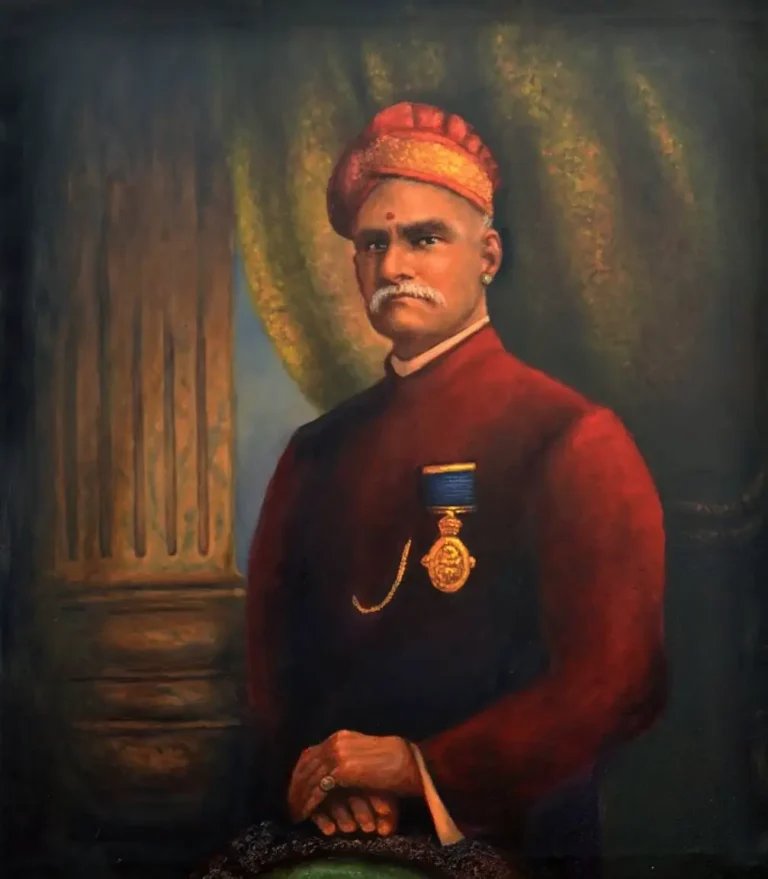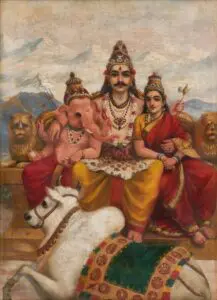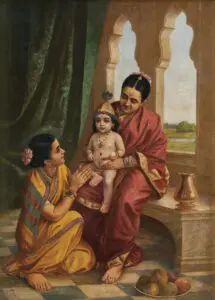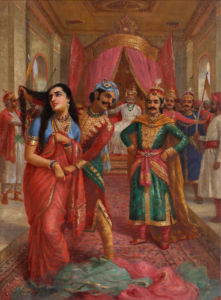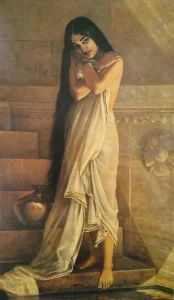Kalki Avatar
Kalki Avatar showcases the final incarnation of Lord Vishnu, depicted majestically on a white horse with four arms wielding a sword and shield. Raja Ravi Varma masterfully combines Indian mythology with European artistic techniques, resulting in a lifelike portrayal that attracts viewers worldwide. This painting underlines the rich cultural heritage and spirituality inherent to Indian art, while prints and reproductions have made it accessible to many admirers.
Late 19th Century
About the Artwork
The Kalki Avatar captures a pivotal moment in Hindu mythology, as it symbolizes hope and renewal. According to the scriptures, Kalki is prophesied to arrive at the end of the current age of darkness (Kali Yuga) to restore righteousness and vanquish evil. Raja Ravi Varma, through his innovative techniques and vibrant imagery, brought this powerful narrative to life. The artwork was also intended to be a prototype for mass reproduction by the Ravi Varma Press, which played a significant role in democratizing art across India, making this divine figure accessible to a broader audience. Varma's unique blend of traditional themes with contemporary aesthetics created a lasting impact on Indian art, and Kalki Avatar stands as a testament to his legacy.
Did You Know
Liked what you see? Add it to your collection.
Enjoyed reading? Share it.
... continued
Depiction
In the painting, Kalki Avatar, the tenth and final incarnation of Lord Vishnu, is depicted riding a white horse. Kalki is typically shown with four arms, carrying a sword and a shield in his principal hands.
Artistic Style
Raja Ravi Varma, known for blending Indian sensibilities and iconography with European academic art techniques, brought a unique style to his works. This blending of styles is evident in the detailed and realistic portrayal of Kalki Avatar.
Medium and Reproduction
The original painting was likely created as an exemplar for the Ravi Varma Press, which would then be used to print chromolithographs. These prints were widely distributed and helped popularize Varma's work across India.




